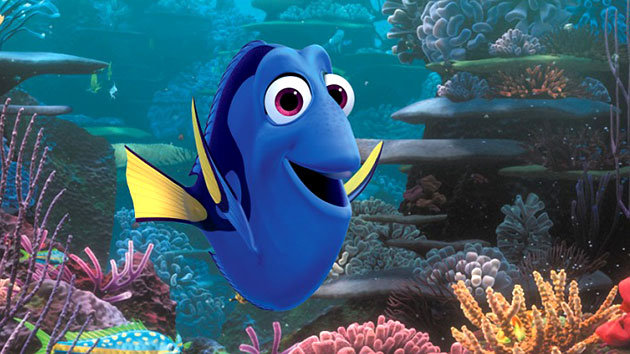The blue hippo tang, Parancanthurus hepatus goes by many names which will soon be all but obscured by one, “Dory”. Also known as the blue tang, regal blue tang, pallette or flagtail surgeonfish, thanks to the forthcoming Finding Dory movie blue hippo tangs will be all but renamed Dories the way that Finding Nemo introduced a generation of Pixar-watching kids to clownfish Nemos.
We were neck deep in the frontlines of marine aquarium retail before, during and long after Finding Nemo came out and not only did we see a huge uptick in new aquarium sales, a huge number of those had to have clownfish. When you work the LFS beat long enough you can spot the kind of guy who needs a pump for a bird bath, or the old lady looking for bettas, and especially that young family with kids banging on the glass while shouting “NEMOOOOOOO!!!”

The results of that latter demographic being a huge demand & increase in the supply of clownfish and lots of people being introduced to aquariums who might never have otherwise. Sure a lot of those tanks were shut down and passed on but plenty of them stayed up, got larger and resulted in lifelong hobbyists in the trade. Likewise, we now have access to dozens upon dozens of designer clownfish varieties whereas previously the Darwin black ocellaris was just about the only artificial clownfish strain around.
When Finding Dory is released it takes very little insight to foresee legions of that same young family coming into the fish store hoping to get their first tank for their kids’ Dory-fish. Where Nemo and Dory differ greatly is that you can easily and successfully keep a pair of clownfish in a 24″, twenty-ish gallon aquarium. Meanwhile, being a surgeonfish the blue hippo tang grows considerably larger and families will need to plan to get a four foot tank or larger for Dory’s expected adult size.

When confronted with the limitation of Dory’s adult size we expect the savvy LFS owners and employees to bring out the contingency plan and steer the prospective customer towards the same Nemo-centric aquarium setup that they sold back when they rode the waves of Finding Nemo. Either way, the popularity of the movie will still result in a huge uptick of the sale of blue hippo tangs and we expect to see two things:
One, there will be a shortage of small blue hippo tangs in the aquarium trade. Don’t think it can happen? It already has, we remember a six month window in mid-2000 where you couldn’t find a blue hippo tang of any size to save your life. Luckily for us, at the time C-quest was selling tank reared blue hippo tangs that were bigger, bright, and totally unafraid of aquarium life and we easily sold out of the captive reared blue hippo tang every week even though they were $10 more than their wild counterparts.
 Secondly, the aquarium hobby is on the cusp of a revolution in captive fish breeding; we’re reporting new species being bred experimentally all around the world on a regular basis and there’s commercial quantities of previously bred species coming online all the time. We can already lean on Sustainable Aquatics for their captive-reared blue hippo tangs which they are sure to ramp up leading up to the big release of Finding Dory. Additionally there have been some reports of full-on captive breeding of blue hippo tangs in Taiwan and fertilized eggs and larvae of blue hippo tangs have been produced as a result of aquarium spawnings.
Secondly, the aquarium hobby is on the cusp of a revolution in captive fish breeding; we’re reporting new species being bred experimentally all around the world on a regular basis and there’s commercial quantities of previously bred species coming online all the time. We can already lean on Sustainable Aquatics for their captive-reared blue hippo tangs which they are sure to ramp up leading up to the big release of Finding Dory. Additionally there have been some reports of full-on captive breeding of blue hippo tangs in Taiwan and fertilized eggs and larvae of blue hippo tangs have been produced as a result of aquarium spawnings.
If history is any indication, the aquarium hobby and blue hippo tangs will experience a huge increase in popularity thanks to the release of Finding Dory. What’s really interesting this time around is that we collectively have the foresight and ample warning to brace ourselves for the wave of new hobbyists that will invariably join our ranks. With proper prior planing we have a real precious opportunity to help people get on the right path with their first aquarium and we have great confidence in all of you to help make that happen.




